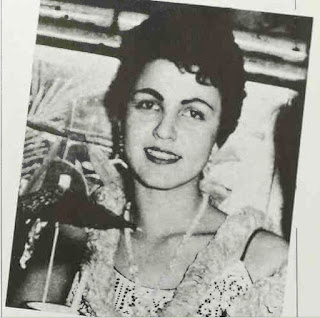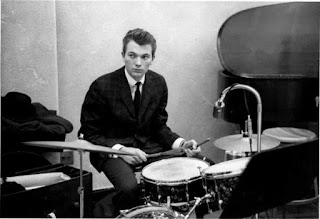A luncheon will be held Nov. 17 at Wellbridge of Romeo, 375 S. Main St. Lunch will begin at 1 p.m., followed by live Elvis and Buddy Holly-themed music from 2 to 3 p.m. The cost is $6 for residents or $7 for nonresidents. Register by Nov. 10. For more information, contact the Romeo Washington Bruce Parks & Recreation Department at 586-752-6543. Source: www.sourcenewspapers.com
For Elvis fans looking to find a new place to dwell, a home which once belonged to The King could be the ideal investment. The Beverly Hills home he lived in between 1967 and 1973 has gone on the market for $30million - twice as much as it sold for just two years ago. Elvis lived in the plush home at 1174 Hillcrest Road in Beverly Hills, LA, with wife Priscilla and their daughter Lisa-Marie.
The 5,400 sq/ft property has retained much of its the out ward stone decor from when Elvis lived there as well as the swimming pool and front gates where he would meet adoring fans. It was previously sold in 2014 for $15 million and is now on the market for $30 million. The King paid $400,000 for the home in the 1960s. Source: www.dailymail.co.uk
Buddy Holly's home was 4-H, a corner apartment at the Brevoort, 11 Fifth Avenue [at 9th Street]. The 2-bedroom unit with a wrap-around terrace rented for $900 per month. Married life with María Elena and Greenwich Village set Buddy Holly aflame. According to his widow, he loved listening to jazz at the Village Vanguard and poetry at local coffeehouses. He also wanted to write movie scores. Source: infamousnewyorkrealestate.blogspot.com
Maria Elena Holly: "Elvis called when Buddy died, and I spoke to him on the phone. I remember that. He called to say how sorry he was. Buddy was able to meet Elvis because he went to Lubbock. The story goes... he told me that Elvis did not have drums at that time. When he started, he didn’t have a drummer. And Buddy said, “You know Elvis, you need a drummer in your band.” It was one of Buddy’s touches."
Harrell Rudolph (an old school friend of Buddy Holly from his time at Lubbock High School): "In autumn 1954, Elvis Presley came to town as the star attraction at the Lubbock County Fair. At this time, Presley was not yet a national phenomenon. As is well known, Buddy and his band was the opening act. The next school day, we were interested to know what Buddy thought of Presley, did he talk to him, etc. I was surprised that to me he seemed a bit negative if not scornful of Elvis. He certainly was not in awe of him. From that day forward, we began to press Buddy to do an “Elvis imitation” at the Spring Round-up."
Buddy Holly felt the only way his dreams would become reality was to break from Norman Petty and move to New York. Buddy wanted to compose and perform music that was not of the rock and roll genre. Living at The Brevoort, Apt 4H, 11 Fifth Ave. Buddy would set up a small area for his Ampex reel to reel recorder where he could try out new song ideas. Buddy recorded six new compositions in December 1958 and in January 1959.
Jean Daniels (Lubbock High School - Class of 1955): "My family moved from Los Angeles to Lubbock during April 1952, and I was enrolled in the 9th grade at JT Hutchinson Junior High School. This was not the most comfortable day in my life. I didn’t know a soul and I was a pretty shy guy. I wandered into a nearby drugstore and found a seat at the soda fountain. A dark haired fellow with horn-rimmed glasses sat down next to me and introduced himself. He knew I was the new guy in school and welcomed me to Lubbock and JT Hutchinson. I am happy that Buddy Holly was my first friend and school mate in Lubbock. But that’s the way Buddy was, just a very nice, quiet, unassuming friendly guy. We remained good friends through out high school.
Despite the multiple names listed as songwriters on his tunes, most sources report that Buddy Holly's songs were, indeed, his. The other credits were mostly added as business arrangements. The industry had tried to manipulate his career, his bandmates had betrayed him, his manager had robbed him... He had tousled dark hair and those horn rims. His complexion was amazingly white and the expression inscrutable yet knowing. One of Buddy's favorite things to eat was tomato soup. His favorite architect was Frank Lloyd Wright.
Michael Shelley (D.J. at WFMU Radio Station, New York): What was Buddy Holly really like?Despite the multiple names listed as songwriters on his tunes, most sources report that Buddy Holly's songs were, indeed, his. The other credits were mostly added as business arrangements. The industry had tried to manipulate his career, his bandmates had betrayed him, his manager had robbed him... He had tousled dark hair and those horn rims. His complexion was amazingly white and the expression inscrutable yet knowing. One of Buddy's favorite things to eat was tomato soup. His favorite architect was Frank Lloyd Wright.
Sonny Curtis: He wasn’t anything like he was portrayed in "The Buddy Holly Story". Gary Busey’s portrayal of Buddy was more like Chuck Berry than Buddy. He also depicted Buddy as a sloppy dresser and an unsophisticated rube. Buddy was neither. Another thing I didn’t like from that movie it's that Buddy sometimes could be a smart alec, but he was always a gentleman.
Norman Petty: I found Buddy to be respectful and responsible. And even though I did not necessarily understand rock and roll, I liked it, although Vi did not, and above all, I appreciated Holly's talent. I didn't know if I was going to be able to understand what he was trying to do and I was criticised for not really understanding, but I think that we pretty well respected each other's capabilities. Buddy was the type of musician that never repeated an error. He was an excellent musician.
Sonny Curtis: I’m not a fan of Norman Petty. He told me once that I was wishy-washy and (paraphrasing) a person of low character. He said that I would wind up in this business with (his words) “a big goose egg.” When you are young, broke, doubting yourself anyway, and struggling to figure it all out, those are words that can break your heart. I’d love to meet him face to face and say, “Man, the way you treated me was not cool.”
Gary & Ramona Tollett: Gary's cousin, June Clark, who was Don Lanier's sister, wanted to help Gary become a recording artist like her brother. (The Rhythm Orchids had the first West Texas hit and million-seller from Norman Petty's studio in Party Doll.) She introduced us to Buddy Holly and Jerry Allison. Buddy was very shy. He was an extremely talented young man. We soon got together at June Clark's house and rehearsed numbers for Gary. Later on, Buddy suggested that we sing back up for him on some recordings that he had scheduled to do at Norman Petty's in Clovis, NM.
Jerry Allison: Buddy Holly affected me the same way than Elvis, he gave me goose bumps. I don’t think Buddy would have followed Elvis into the casinos scene. Buddy liked writing songs and he was into producing, I’m sure he would still have been amazing.
Jerry Allison never really got over the loss of Buddy in the Bonanza air-crash flying between Mason City, Iowa, and Fargo, North Dakota. Ironically, the promoter of the next event had been trying to get it cancelled due to the weather, not knowing that the three singers had already chartered a plane. Allison did "really regret that it worked out the way it did." ―"The Crickets: Six Decades of Rock ‘n’ Roll Memories" (2016) by Gary Clevenger & Tony Warran





























































